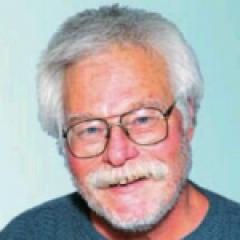How Do We Go from “the Anti-Education Era” to Meaningful Learning for All?
James Paul Gee’s The Anti-Education Era is full of analyses of how humans learn that should inform the practice of all types of educators. Previous posts, here and here, describe his powerful indictments of test-driven schooling, as well as his subtle explanations of where “reformers” and other educators have gone wrong. This post will focus on Gee’s most concise and actionable proposal for improving schools, as well as his more exhortative call for real learning. First, he outlines the potential for high-quality early education. Second, Gee advocates for the creative educational culture of the Massachusetts Institute of Technology Building 20; such a team effort should be the model for public schools.
The best way to help poor children is high-quality early education to close the “literacy gap.” Educators must “engage children and help parents engage their children in extended conversations about the world.” This instruction must incorporate rich images. It must teach children to engage in goal-based actions. Pre-school must essentially extend children’s experiences beyond their neighborhood. In other words, parents and educators must help children develop “islands of expertise.”
Gee dubs this process, “TTK,” or “Talk, Text, and Knowledge mentoring.” The “talk” component means “interactive, sustained, elaborative talk.” By the time richer and poorer kids reach school, the gap in that mentoring is huge, and it can be remedied only by great effort over a long time – probably over the first eight years of schools. Educators require that time to provide “a social and emotional connection to school-based literacy.”
Gee’s second, less specific suggestions grew out of M.I.T.’s Building 20, where Noam Chomsky and other linguists, biologists, psychologists, and computer scientists built a fantastic interdisciplinary team. It provided enough people, with varying perspectives, with the opportunity to run into each other in unpredictable ways. Sometimes discussions were “errant,” sometimes unpleasant, but the human friction unleashed their creativity. Gee’s lesson is that human intelligence “is not primarily tied to individuals operating alone, … it is not tied primarily to digital tools, virtual spaces, or fancy buildings. …” Human intelligence is blended with, “face-to-face interactions, physical spaces, and deep educational uses.”
Gee would extend the learning opportunity that he has enjoyed to rich and poor students in public schools and in colleges. To do so, we must “stop defining ‘courses’ in terms of bodies of facts called ‘content.’” Even young children must work collaboratively to define hard problems and “recruit facts as tools for problem solving.” We must build “collective intelligence” and carve out “passionate affinity spaces” for students and teachers. We must all learn how to “be part of big Minds with big ideas.” Students must learn to balance sciences empirical methods with the liberals arts’ “Mind visions.” We must demand that “each student become a maker of visions, a visionary, and not just a spectator of visions.”
And, that leads the essence of Gee’s vision. It is as complex as the most sophisticated and interdisciplinary scientific endeavor. It is as simple as the faith that all children deserve the same meaningful education.
This blog post has been shared by permission from the author.
Readers wishing to comment on the content are encouraged to do so via the link to the original post.
Find the original post here:
The views expressed by the blogger are not necessarily those of NEPC.
